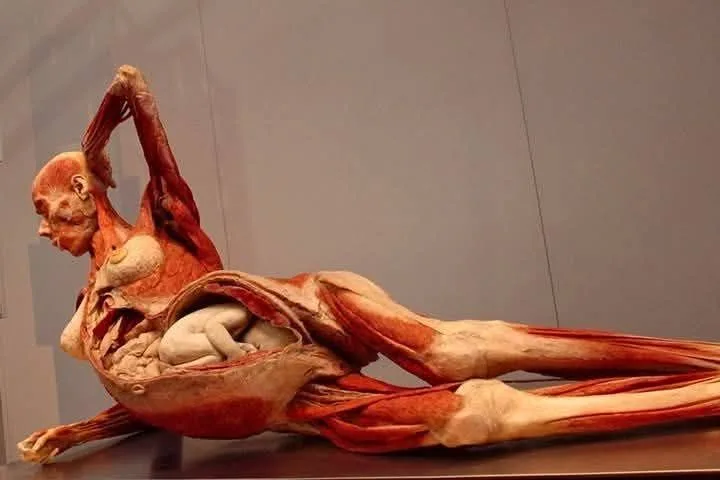Here in Phnom Penh, like many cities across the globe, the intricacies of the human body are often explored through scientific exhibitions. Among the most impactful and frequently discussed are those featuring plastinated human remains, pioneered by Dr. Gunther von Hagens. While these exhibits often spark debate and evoke a range of emotions, one particular specimen consistently stands out for its profound and unsettling nature: the plastinated pregnant woman.

This is not a display for the faint of heart. The plastination process, a meticulous technique that takes weeks or even months, replaces the body’s natural fluids and fats with polymers. The result is a remarkably preserved specimen, allowing for an unprecedented view of the human anatomy. In the case of the pregnant woman, this process offers a direct and visceral look into the incredible reality of gestation within the maternal body.
What makes this exhibit so compelling and, for many, deeply emotional, is the story behind it. This particular woman was reportedly a friend of Dr. von Hagens, who, upon receiving a terminal diagnosis and learning she would not survive to give birth, made the selfless decision to donate her body to the exhibition. Tragically, despite the medical circumstances preventing the mother from carrying her child to term, the plastination process captured the unborn baby nestled within her womb, believed to be in its eighth month of development.
Seeing this exhibit is an experience unlike any other. The preserved tissues and organs lay bare the complex biological processes at play during pregnancy. You can observe the positioning of the fetus, the intricate network of blood vessels, and the sheer physical transformation the mother’s body undergoes to support new life. It’s a tangible representation of a biological miracle, frozen in time through scientific ingenuity.
However, the exhibit undeniably carries a heavy weight. The knowledge of the mother’s and child’s fate adds a layer of poignancy and even discomfort. It forces viewers to confront the fragility of life, the profound bond between mother and child, and the heartbreaking realities some families face. The controversy surrounding plastinated human remains is often reignited by such displays, prompting discussions about consent, the ethics of displaying human bodies, and the boundaries of scientific exploration.
Yet, amidst the potential unease, the educational value is undeniable. For medical professionals, students, and the general public alike, this exhibit offers an unparalleled opportunity to understand human anatomy and the incredible journey of pregnancy. Textbooks and diagrams provide valuable information, but witnessing the three-dimensional reality of a pregnant uterus and the developing fetus offers a deeper, more impactful understanding.
The work of Dr. Gunther von Hagens, including this poignant exhibit, challenges our perceptions of death and the human body. While it may be surprising, controversial, and even uncomfortable, it undoubtedly serves as a powerful reminder of the complexities of life and the intricacies of our own biology. The plastinated pregnant woman stands as a testament to a personal tragedy, a scientific marvel, and a catalyst for profound reflection on the human condition. Whether you find it morbid or mesmerizing, its impact is undeniable, leaving a lasting impression on all who encounter it.
Have you encountered plastinated exhibits before? What are your thoughts on the display of human remains for educational purposes? Share your opinions in the comments below.




